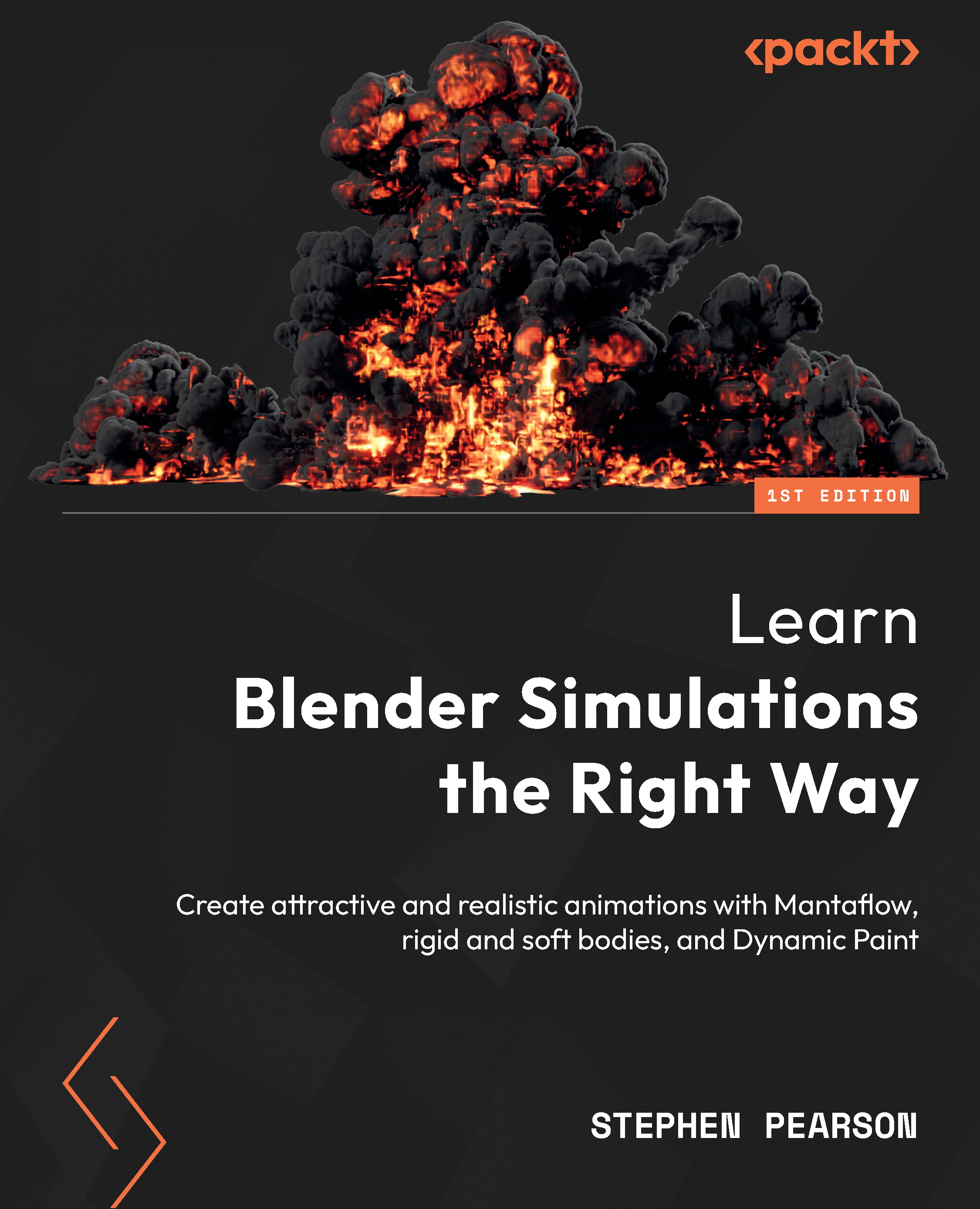Domains
We learned a little bit about domains in Chapter 1, An Introduction to Mantaflow, in the What you need to create a simulation section, but let’s do a quick refresher!
A domain object is the container for the entire simulation, in which no fluid or smoke can leave the boundaries. The shape of this container is always going to be a cube. Even if you use an object that is not a cube, Blender will use the bounding box of the object as the domain size.
Another thing to keep in mind is the size of the domain. The bigger it is, the higher the resolution you will need to make the simulation look good. This results in longer bake times, bigger file sizes, and more computation power.
There are two types of domains: gas and liquid. Gas is used for fire and smoke simulations, whereas liquid is used for fluid simulations. Inside the domain, many settings and values will affect the look of the simulation. Most of these panels and settings are the same for both the gas and...
































































